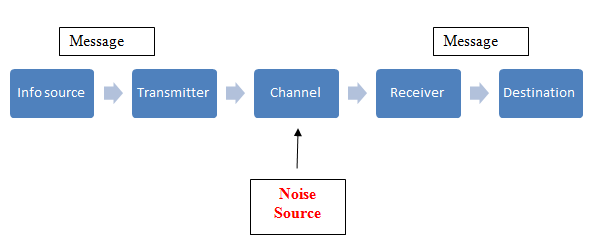Communication Model for Organisation
This article proposes a communication model for organisation in health industry. Communication is “a process of circular interaction involving a sender, receiver, and message” (Moran et al., 2007, p. 45) and the quality and level of communication plays an important role in running the operations by the health authority.
Facilitation of communication in the health authority organisation in order to send messages to internal and external stakeholder can be explained by application of Shannon and Weaver’s (1949) model of communication which consist of five elements: information source, transmitter, channel, receiver and destination.
Shannon and Weaver’s (1949) model of communication
Adapted from Chandler (1994)
Information source in case of the health authority relates to senior level management aiming to communicate information about changes in the organisation.
Transmitter for the health authority relates to press office in case of communication with external stakeholders. In internal communication, on the other hand, line level managers and immediate supervisor may serve as transmitters of messages sent by stop management.
Channels available for the health authority to transmit its messages include but not limited to the official website of the organisation, press releases in local and national media, newsletters etc.
Receiver can be represented by media for external communications as a wide range of media platforms can discuss official press releases of the health authority organisation thus, causing the message to reach its destination.
Destination for communication message represents individuals and parties for whom the message is intended.
Noise is an important factor in this model of communication as it can interfere in communication process potentially causing messages to be misunderstood. Therefore, it is important for the health authority management to be proactive in terms of eliminating or at least minimising the noise.
References
Chandler, D. (1994) “The Transmission Model of Communication” Available at: http://www.aber.ac.uk/media/Documents/short/trans.html
Shannon, C.E. & Warren, W. (1949) “A Mathematical Model of Communication” University of Illinois Press

